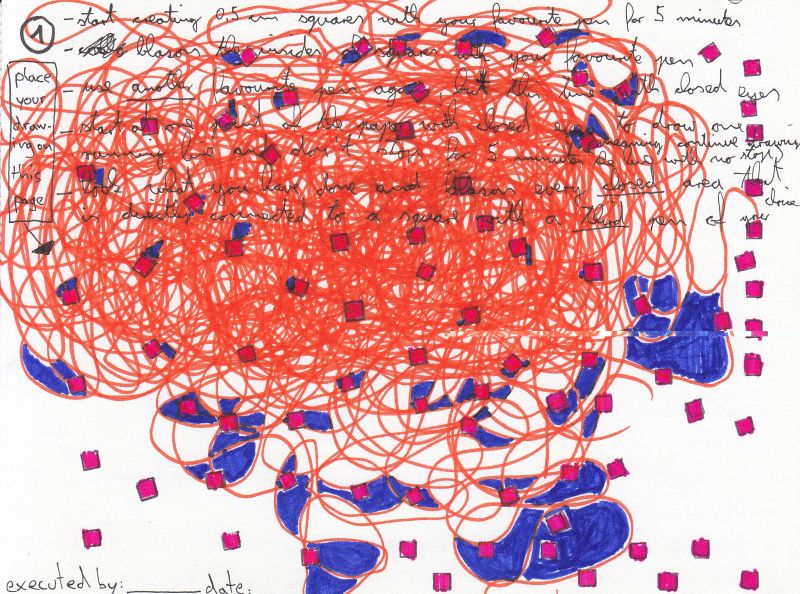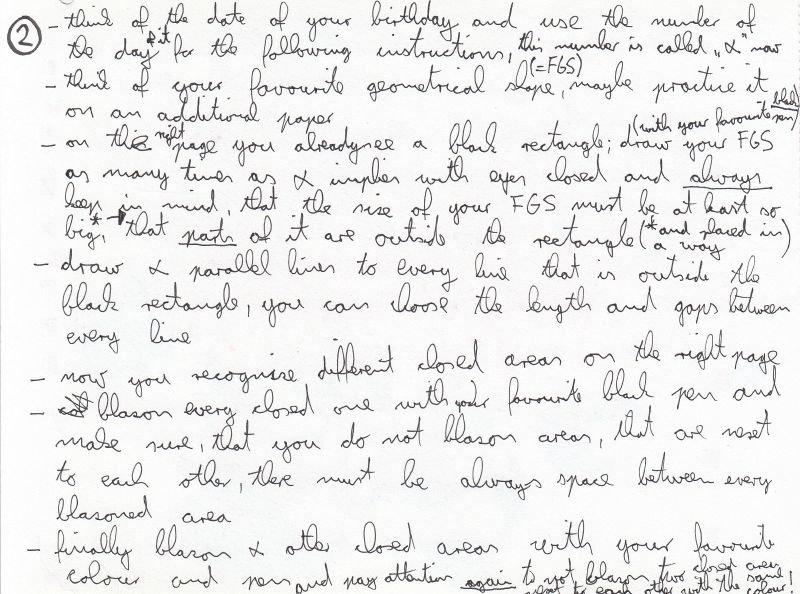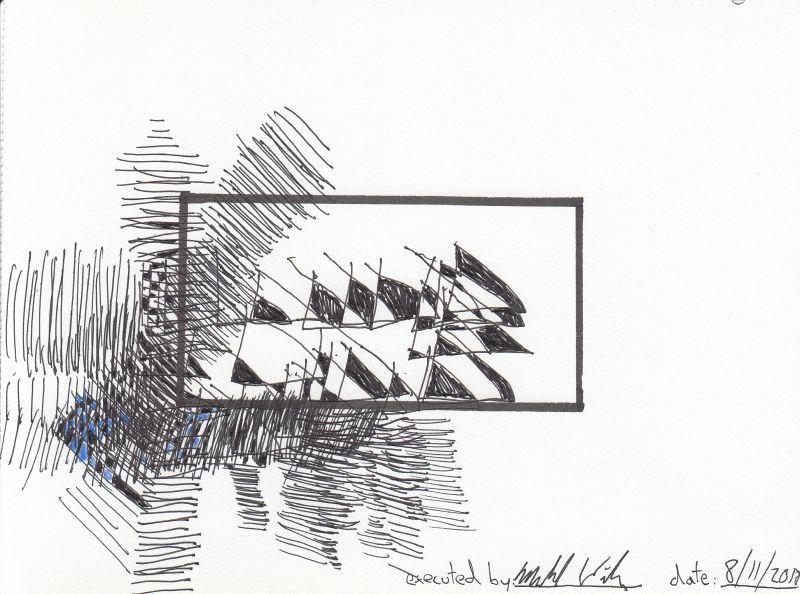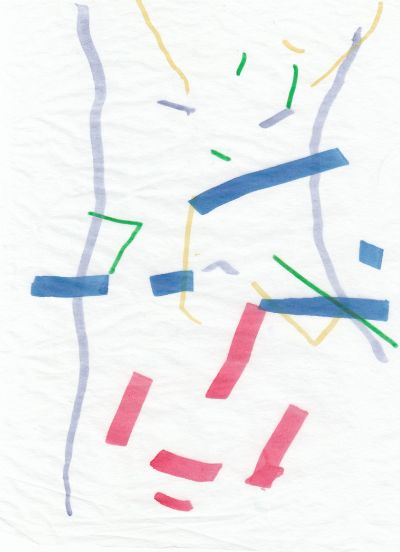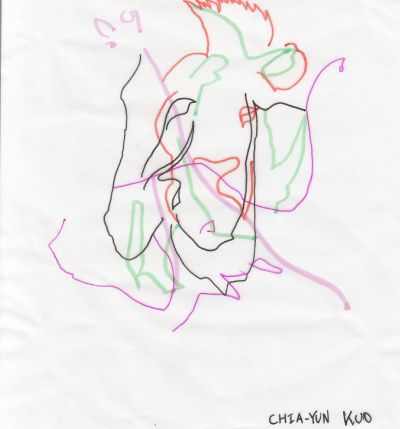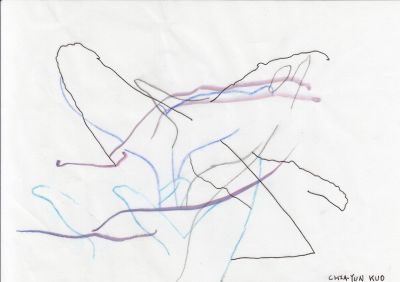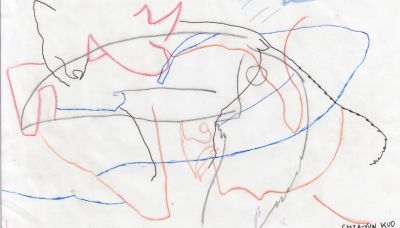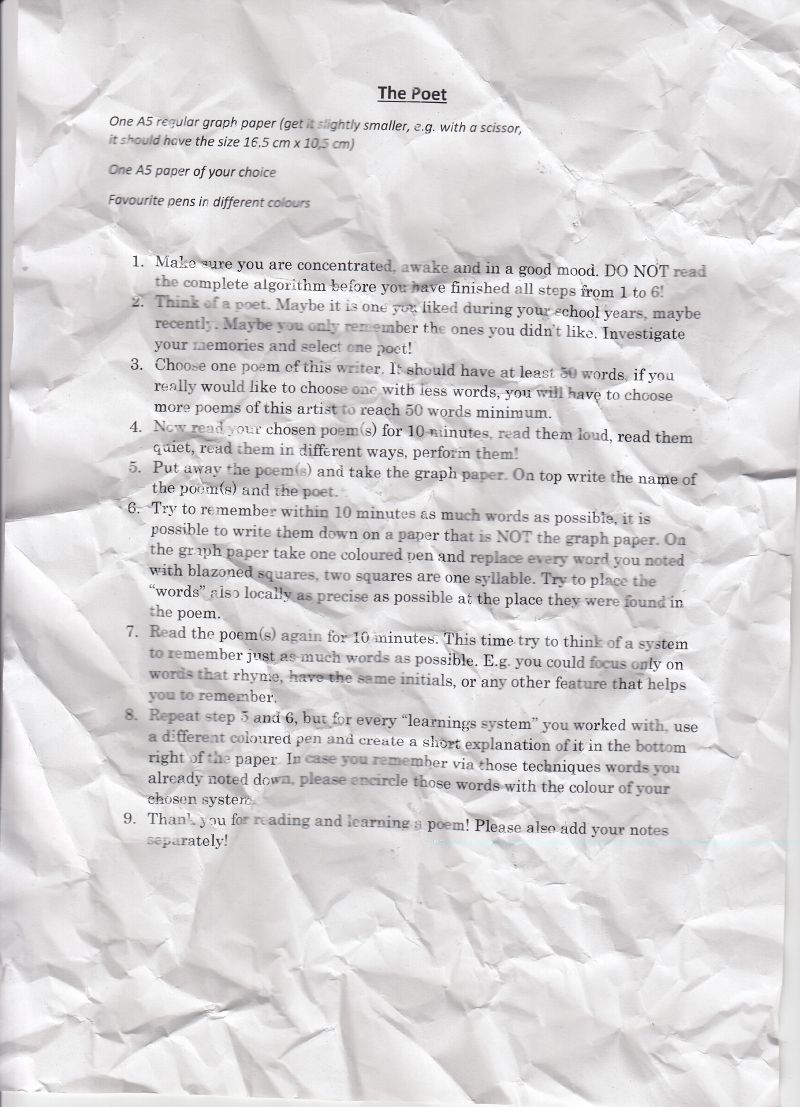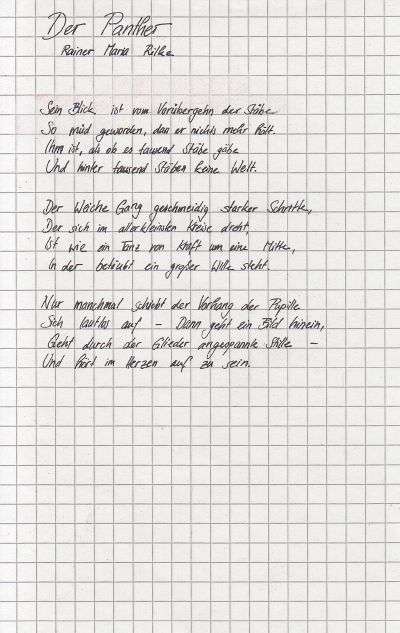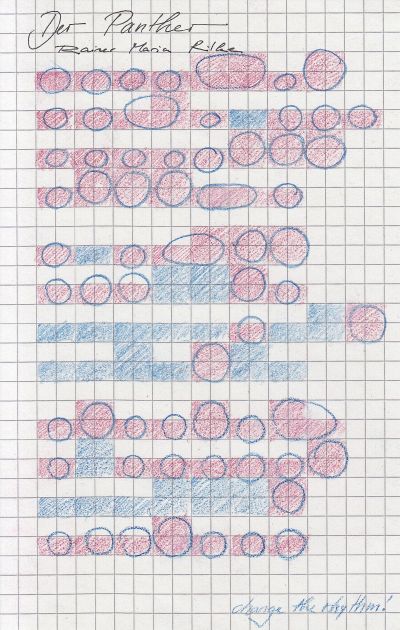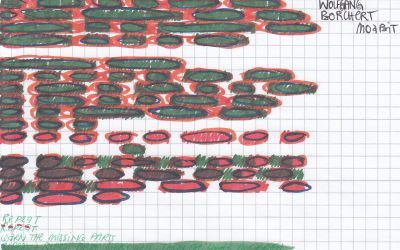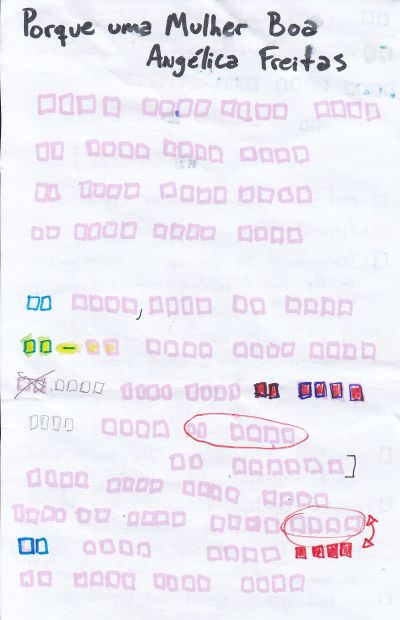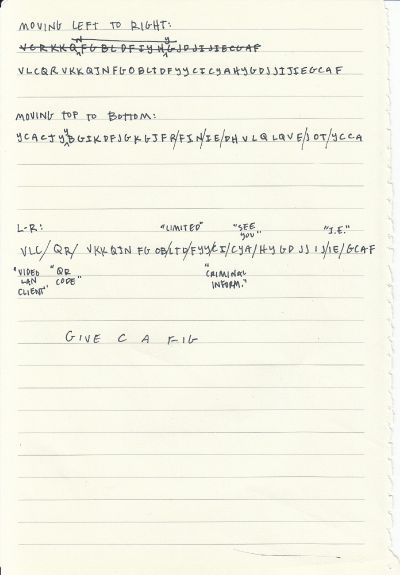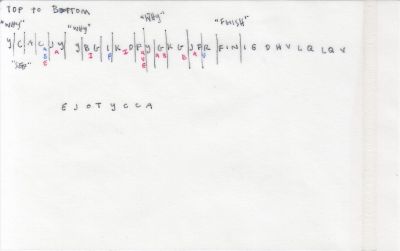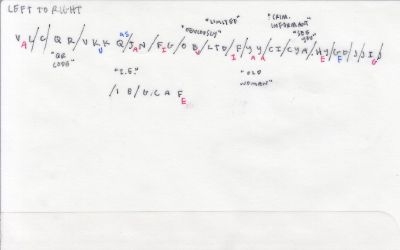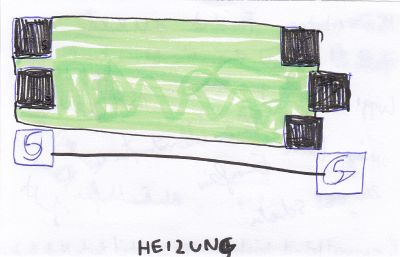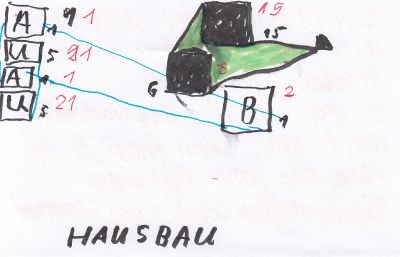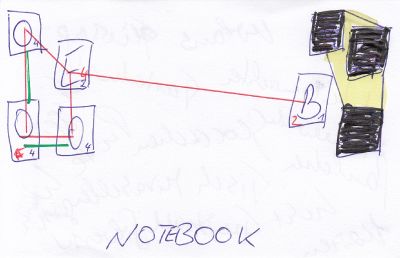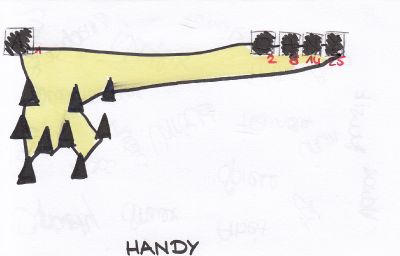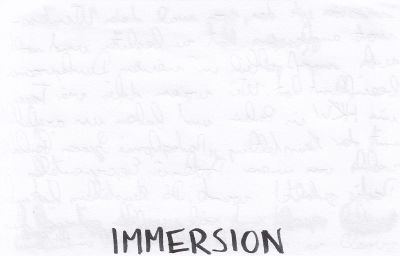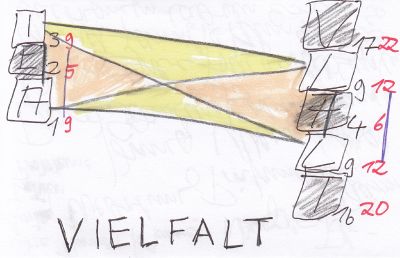| Line 13: | Line 13: | ||
# Make sure it has lots of pictures! You can also work in the library and you can also use more than one favorite animal book. | # Make sure it has lots of pictures! You can also work in the library and you can also use more than one favorite animal book. | ||
# Open the animal book in a random way and select one of the animals you see now to put the translucent paper on it. | # Open the animal book in a random way and select one of the animals you see now to put the translucent paper on it. | ||
# Now try to capture the animal in your very personal way with five lines, not more not less, do NOT connect those five lines and make sure it does not look like they are almost connected (I trust you) | # Now try to capture the animal in your very personal way with five lines, not more not less, do NOT connect those five lines and make sure it does not look like they are almost connected (I trust you). | ||
# Repeat step 2 and 3 four more times, and ALWAYS use the same translucent paper with another colored pen. It is totally fine and fun when lines overlap! | # Repeat step 2 and 3 four more times, and ALWAYS use the same translucent paper with another colored pen. It is totally fine and fun when lines overlap! | ||
# Congratulations! You draw 5 times 5 lines and saw beautiful animals. | # Congratulations! You draw 5 times 5 lines and saw beautiful animals. | ||
Revision as of 20:12, 18 March 2019
Algorithms for Human Graphical Processors (HGP)
I: Mellow Chaos
II:
III: 5 Times 5 Lines
five different colored pens, if possible also with different tips one A5 piece of sandwich paper or comparable paper (it has to be translucent) before you start, make sure that all your selected pens work on the chosen paper
- Take your favorite animal book, in case you’re not in this lucky situation, go to the library to get an animal book of your choice.
- Make sure it has lots of pictures! You can also work in the library and you can also use more than one favorite animal book.
- Open the animal book in a random way and select one of the animals you see now to put the translucent paper on it.
- Now try to capture the animal in your very personal way with five lines, not more not less, do NOT connect those five lines and make sure it does not look like they are almost connected (I trust you).
- Repeat step 2 and 3 four more times, and ALWAYS use the same translucent paper with another colored pen. It is totally fine and fun when lines overlap!
- Congratulations! You draw 5 times 5 lines and saw beautiful animals.
IV: The Poet
V: Subliminal Messages
Newspaper, economics focused or at least one with lots of numbers and text, one black felt pen, one red felt pen, one blue felt pen
- Open a page in the chosen newspaper, make sure there are a lot of numbers in the text. Best would be a page or double page full of letters and numbers.
- Cut out a piece of this text in size of 20x15 cm and make sure you have a lot of numbers and letters in this piece as well.
- Put squares around every number with your black felt pen.
- The numbers now symbolise the alphabet (A=1, B=2, C=3, ..., Z=26).
- Now translate the numbers into letters and put the translated letter over the according number. Since starting at “J” the numbers get binary, you can often choose how to translate the numbers.
- Try to find via this method something like a message within the text. Maybe it won’t be complete, but this does not matter since:
- You will get some extra letters by observing your environment: When you are outside of your home, look for numbers. Collect as much cyphers as your first name consists of letters.
- Use the same technique as before to translate those cyphers and put them at places of the already existing message to complete it more, use your red felt pen.
- Put this subliminal message of the newspaper back in the envelope you received this algorithm in and send it to your own address!
- When you receive your letter, check for all numbers of the postmark and use them as well to complete your message with the now familiar technique of translating cyphers into letters. This time use the blue felt pen.
- Bring the result in the envelope back to class.
- If you would like to get more into subliminal messages in an entertaining way (with great music), go watch “Under the Silver Lake” at Lichthaus Weimar!
VI: Familiengeschichten
Papierbögen entsprechend der Personenanzahl im Format 15x20 cm, Textmarker, Kugelschreiber, verschiedene farbige Stifte, Papierkleber
- Verwende das Papier im Querformat und falte es indem du die jeweils gegenüber liegenden weiter entfernten Ecken übereinander legst.
- Überlege dir ein Substantiv, das dein Leben oder deinen Beruf beschreibt und schreibe es mit einem schwarzen Stift in etwa mittig auf die untere außen gelegene Kante des quer vor dir liegenden Papiers, welche nicht offen ist und durch das Falten entstanden ist; verwende ca. 1 cm große Großbuchstaben in Druckschrift. Ä, Ö, und Ü werden ausgeschrieben, also AE, OE, UE.
- Schreibe nun mit einem Kugelschreiber und mit starkem Druck auf das Papier etwas zu deinem gewählten Begriff in das INNERE deines Papierbogens, auf die Seite des gefalteten Papiers, auf der sich außen gelegen auch dein Begriff befindet (erkennbar daran, dass er durch das Papier schimmert), du musst ihn dafür aufklappen. Verwende die Technik des „Free Writings“: Schreibe also einfach drauf los, ohne Nachzudenken, was dir zu deinem Begriff oder einfach in diesem Moment einfällt oder du denkst. Wichtig ist nur, dass du nicht aufhörst zu schreiben, bis die Seite des gefalteten Papiers voll ist. Es gibt kein richtig und kein falsch. Verwende deine Alltagsschrift, es muss nicht lesbar sein. Klebe deinen Papierbogen danach mit einem Papierkleber zu!
- Sortiere nun die Buchstaben deines Begriffs auf der Außenseite nach Vokalen und Konsonanten. Platziere erstere auf der oberhalb deines Begriffs links gelegenen Hälfte des gleichen Papiers, letztere auf der oberhalb rechten Hälfte, gut verteilt in selber Schrift und Größe.
- Umrahme die Buchstaben quadratisch mit dem selben Stift und nummeriere mit diesem die Buchstaben an der unteren rechten Ecke eines jeden Quadrats nach folgendem Schema:
- Vokale und Konsonanten werde jeweils und unabhängig voneinander durchnummeriert gedacht (A=1, E=2, I=3, O=4… B=1, C=2, D=3, F=4 usw.).
- Verbinde nun alle gleichen Zahlen mit geraden Linien mit einem Stift deiner Wahl, ausgenommen Textmarker (Achtung: A=1, B=1, usw.).
- Alle Buchstaben, die nun übrig bleiben, werden erneut in rot nummeriert, dieses mal nach „normalem“ Schema: A=1, B=2, C=3,…, Z=26.
- Verbinde nun erneut gleiche Zahlen, egal ob rot oder schwarz, mit Linien, dieses mal jedoch mit einem anderen Stift deiner Wahl.
- Sollten nun immer noch Buchstaben übrig bleiben, male deren Quadrate schwarz aus!
- Diese schwarzen Quadrate werden ebenfalls mit einer schwarzen Linie verbunden. Falls sich eine geschlossene Fläche daraus ergibt, wird diese nun mit einem Textmarker deiner Wahl deckend ausgemalt, ansonsten darfst du auf dem Papier ein oder mehrere in etwa gleich große schwarze Dreiecke platzieren, die diese Fläche markieren und damit auch, welche Teile deiner Geschichte und Gedanken auf spiegelverkehrte Weise vom Textmarker betont werden.
